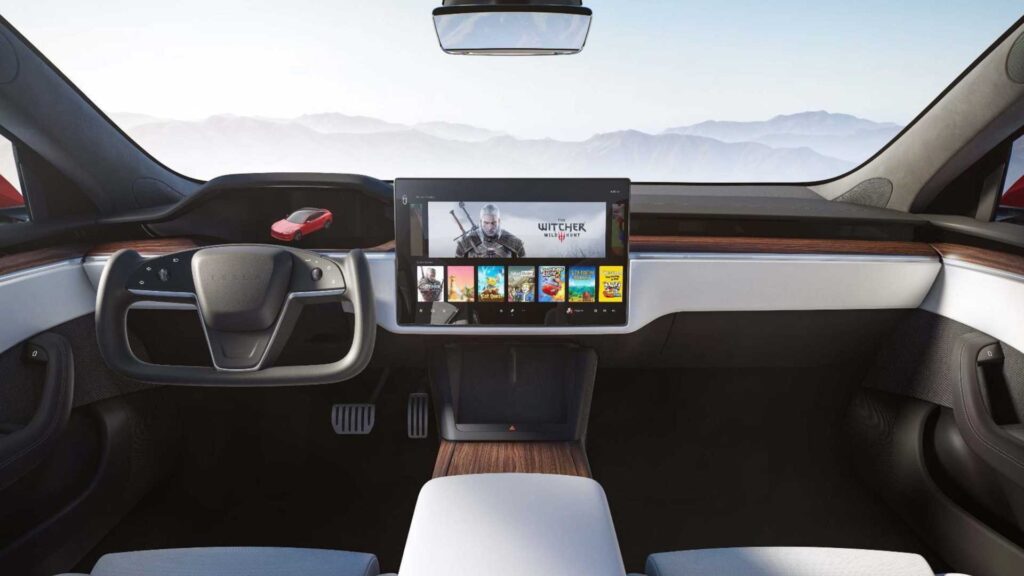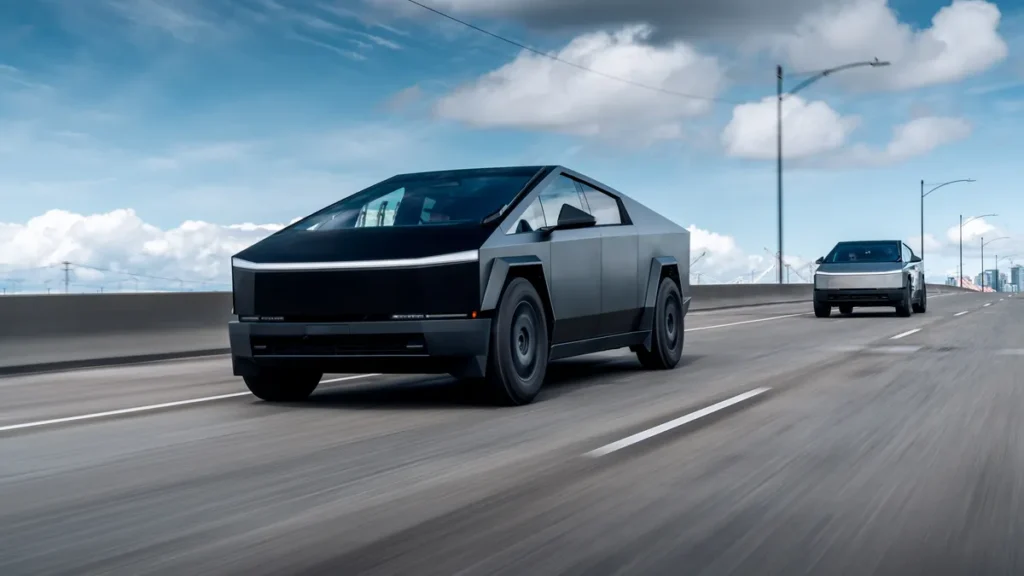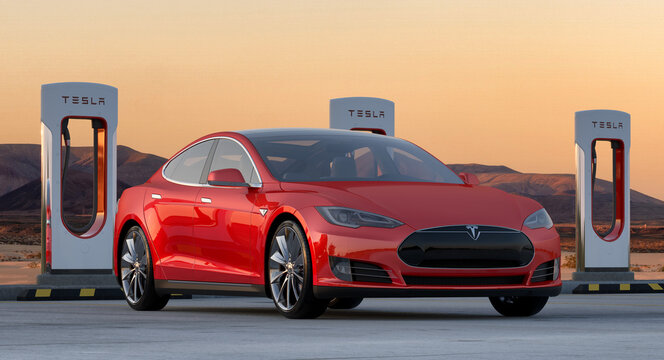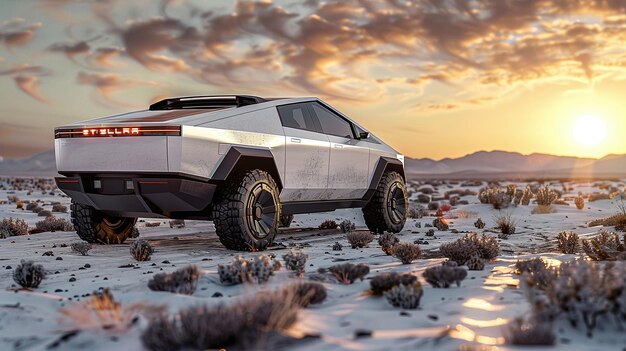Tesla Cybertruck and Tesla Model S Plaid in 2030: The Future of Tesla’s Flagship Vehicles
In 2030, Tesla’s Cybertruck and Model S Plaid are expected to showcase the future of electric vehicles with unparalleled advancements in technology, autonomy, and performance. Both vehicles are set to lead the EV market, targeting different consumer demands: the Cybertruck with its rugged, utility-focused design and the Model S Plaid with unmatched speed and luxury. Here, we’ll dive into the anticipated evolution of these flagship Tesla models and why they will likely continue to dominate in the EV space.
1. Tesla Cybertruck in 2030: A Revolution in Utility and Technology
The Tesla Cybertruck, Tesla’s electric pickup, represents a futuristic design and functionality fusion. Originally unveiled in 2019, the Cybertruck drew attention with its stainless steel exoskeleton and unconventional look. As we look ahead to 2030, here’s what we can expect from the Cybertruck regarding durability, technological advancements, and adaptability.

a. Durability and Resilience
Tesla’s Cybertruck was designed for durability with its ultra-hard 30X cold-rolled stainless steel exoskeleton. By 2030, Tesla is likely to have further improved the vehicle’s structural integrity and material resilience, potentially incorporating new materials that are both lightweight and even more impact-resistant. This will make it ideal for customers who need a high-performance vehicle for rugged terrain, industrial applications, or extreme weather conditions.
b. Battery Capacity and Range
As battery technology advances, the Cybertruck will likely offer improved range and battery capacity. Current models are expected to deliver around 500 miles per charge, but by 2030, advancements in solid-state battery technology could potentially push this range closer to 700 miles or more. This extended range will appeal to both urban and rural drivers who need to rely on their vehicles for extended periods without recharging.
c. Autonomous Off-Road Capability
Tesla’s Full Self-Driving (FSD) software, expected to be significantly more refined by 2030, will offer autonomous driving solutions even on rough terrain. By enhancing FSD to adapt to non-standard road conditions, Tesla may make the Cybertruck capable of handling both city streets and challenging off-road landscapes autonomously. This will cater to drivers who use their trucks for camping, outdoor activities, and work in rural areas.
d. Solar Power and Energy Efficiency
One of Tesla’s goals for the Cybertruck was the integration of solar panels on its tonneau cover, providing additional charging capability. By 2030, solar efficiency is expected to be higher, enabling longer vehicle uptime without a need for frequent recharging. This feature could generate enough energy to cover short distances purely on solar power, making the Cybertruck even more self-sufficient.

e. Versatility and Customization
The Cybertruck’s unique, modular design lends itself to customization, and Tesla may capitalize on this by offering customizable features that cater to specific use cases, such as camper modules, tool storage, or even mobile workstation options. These add-ons would attract a wide range of buyers, from contractors to off-road enthusiasts.
2. Tesla Model S Plaid in 2030: A Fusion of Luxury and Performance
While the Cybertruck redefines utility, the Tesla Model S Plaid has set a high bar for luxury electric sedans. Known for its remarkable speed and range, the Model S Plaid will likely evolve into an even more sophisticated vehicle by 2030, offering luxury, autonomy, and performance on an unprecedented scale.
a. Unparalleled Speed and Performance
The Model S Plaid currently reaches 0-60 mph in under two seconds, an impressive feat that will continue to impress in 2030. While maintaining this speed, Tesla may refine the driving experience to increase safety and stability at high speeds. The Model S Plaid will likely feature an updated three-motor drivetrain with enhanced torque control, making it an excellent choice for drivers seeking speed and sophistication.
b. Enhanced Range and Battery Efficiency
Tesla’s advances in battery technology could make the Model S Plaid one of the longest-range vehicles available, potentially pushing ranges beyond 600 miles per charge by 2030. This increase in range would ensure that the Model S Plaid remains a premier option for long-distance travelers seeking luxury and convenience.
c. Autonomous Driving and AI Integration
Tesla’s Full Self-Driving capability is anticipated to reach new levels by 2030, with nearly complete autonomous functionality. Enhanced with AI, the Model S Plaid will likely feature the most advanced autonomous driving features available, making it a top choice for customers who prioritize safety and efficiency in a luxury vehicle. Tesla’s AI software may also learn individual driving preferences, adjusting performance and cabin settings to create a personalized experience.
d. Luxury Interior and High-Tech Amenities
Tesla has already introduced a minimalist, high-tech interior design in its vehicles, but the Model S Plaid’s 2030 edition will likely raise the bar further. Enhanced with haptic feedback controls, immersive infotainment, and possibly even augmented reality (AR) displays, the Model S Plaid will provide a high-end driving experience that rivals other luxury brands.
Tesla is expected to introduce cutting-edge cabin technologies, such as smart ambient lighting and biometric identification for security and personalization, where each driver profile is automatically set up based on the driver’s fingerprints or face recognition. This would add an extra layer of luxury and convenience for Model S Plaid owners.
e. Sustainability and Eco-Friendly Features
Tesla aims to minimize the environmental footprint of its vehicles, and the Model S Plaid in 2030 is expected to lead in sustainable luxury. Innovations in recycled materials for the interior, increased energy efficiency, and carbon-neutral manufacturing processes may make the Model S Plaid one of the most sustainable luxury cars available. Additionally, Tesla’s biodegradable interior options could enhance the appeal to eco-conscious buyers.
3. Comparing the 2030 Tesla Cybertruck and Model S Plaid
While both vehicles will feature Tesla’s groundbreaking technology, they cater to distinct audiences. The Tesla Cybertruck will attract customers who value ruggedness, off-road capability, and utility, while the Model S Plaid will continue to appeal to those looking for luxury, speed, and advanced AI-driven convenience. Both vehicles will likely share advancements in Tesla’s battery technology and FSD capabilities, but each will use these features to serve different driving needs.
| Feature | Tesla Cybertruck 2030 | Tesla Model S Plaid 2030 |
|---|---|---|
| Design | Rugged, industrial exoskeleton | Sleek, luxurious sedan |
| Range | 700+ miles with solid-state battery | 600+ miles with enhanced battery |
| Primary Audience | Off-road, utility-focused drivers | Luxury and speed-focused drivers |
| Autonomy | Off-road FSD, versatile applications | Advanced urban and highway FSD |
| Customization | Modular, utility-based add-ons | Personalized luxury interior |
| Sustainability | Solar power options, recycled parts | Eco-friendly interior materials |
4. The Future of Tesla’s Flagship Models: Cybertruck and Model S Plaid
By 2030, Tesla’s Cybertruck and Model S Plaid are positioned to dominate their respective market segments. With the Cybertruck, Tesla will appeal to buyers seeking a versatile, tough, and sustainable utility vehicle. Meanwhile, the Model S Plaid will set new standards in the luxury EV market, offering high-speed performance, advanced autonomous driving, and an elegant driving experience.

5. Conclusion: The Dominance of Tesla in the 2030 EV Market
As we approach 2030, Tesla’s Cybertruck and Model S Plaid exemplify the company’s commitment to innovation, sustainability, and customer-centric design. These models will not only redefine their vehicle categories but will also continue to push the boundaries of what’s possible in electric transportation. By leading the charge in battery technology, autonomous driving, and sustainable practices, Tesla’s flagship models are well-positioned to maintain their appeal to a broad range of consumers, from adventure seekers to luxury aficionados.
Tesla’s vision for the future, embodied by the Cybertruck and Model S Plaid, will drive the company’s leadership in the EV market, ensuring that both vehicles stand out as some of the best choices for consumers in 2030 and beyond.

















